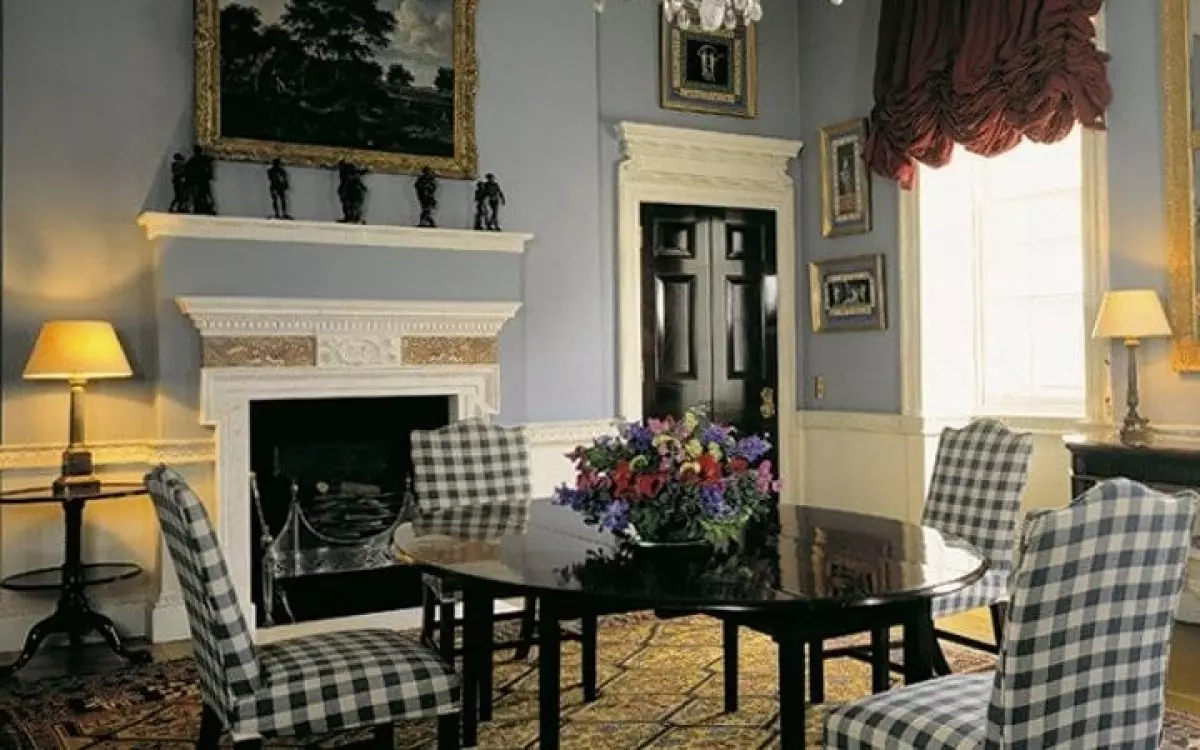
Georgian interior design is synonymous with elegance and royal luxury. It incorporates elements from Rococo, Gothic, Chinese, and Eastern styles, while maintaining its unique charm, atmosphere, and coziness that exude warmth and tranquility.
A Brief History of the Georgian Style
We all recognize the refined English classics, and the Georgian interior design is its originator. Named after King George I of Great Britain, the Georgian style emerged during the time when Rococo was widely popular. Travelers brought home diverse traditions of home decoration, and the fusion of pompous Rococo with restrained classicism gave birth to this remarkable style.
Distinctive Features of Georgian Interior Design
Symmetry and straight lines brought a sense of restraint to the exuberant Rococo style. Chinese Gothic influences are also evident in Georgian interiors. The craft sphere advanced, resulting in the use of natural red wood and the introduction of glass creations, replacing the heavy ornamentation of classicism.
Georgian-style houses were known for their practicality and comfort. Fireplaces provided warmth during colder seasons, as central heating did not exist at the time. The large and voluminous windows allowed ample natural light to flood the interiors, a rarity in those days. The color palette embraced muted natural tones, initially featuring light brown, marsh, and gray shades, which later expanded to include more progressive colors like blue and pink. Gilding elements added a touch of opulence.
Key Features of Georgian Interior Design
The elegant and refined Georgian style is timeless and highly sought after, particularly for country houses. It suits living rooms, bedrooms, hallways, and offices exceptionally well, while the dining area becomes truly enchanting. To recreate this interior, follow these guidelines:
- Divide the wall into three strips, from floor to ceiling. The lower strip comprises wooden panels, the middle part showcases wallpaper or plain painting with decorative molding, and the upper portion is adorned with a gilded cornice.
- Classic ornamentation or fabric with multiple folds can embellish the walls, offering a traditional or modern touch, respectively.
- Traditional parquet flooring is typical, but modern alternatives like linoleum with marble accents or laminate that imitates luxurious woods can be embraced.
- Georgian style favors moderate and restrained furniture, characterized by refinement and elegance.
- Window openings should be adorned with heavy noble fabrics, with abundant folds and thick cords with tassels for added atmosphere.
- Lighting fixtures should be chosen in accordance with the era's forms. Sconces, floor lamps, and table lamps in the shape of candles or adorned with decorative lace shades are ideal.
- Decorative elements such as mirrors in heavy frames, decorative panels, paintings, and lamps can enhance the interior, provided that proportions and symmetry are maintained.
Interior Decoration in Georgian Style
During the Georgian era, furniture production saw advancements, and the design of walls embraced expensive and luxurious materials. Marble panels, carved wooden products, stucco, and layers of natural wood showcased the beauty and aristocracy of Rococo and classicism. Wall decoration was particularly intriguing and unique, with elegant wood panels occupying a quarter of the wall's height and being adorned with classic plinths. The middle part was embellished with elite wallpaper or expensive fabric. The floors boasted wooden boards or polished parquet, bringing a mirror-like shine. Carpets added comfort and atmosphere, featuring Oriental patterns or restrained classical ornaments. In areas with high humidity, terracotta tiles were a practical choice. Beautiful curtains made of elite fabrics completed the design, accompanied by lambrequins and various pleats.
Furniture in Georgian Style
Georgian-style furniture harmoniously combines all elements with the overall interior, matching not only in appearance but also in the materials used. Upholstery often features delicate and bright Oriental patterns, with hand embroidery being a particularly captivating option. Living rooms often feature chairs or upholstered chairs, while kitchens embrace chairs with woven seats and cozy little pillows in the same style, tied with satin ribbons. Furniture should not overcrowd the space but rather create a sense of freedom and ample room. Each element should be positioned at a small distance from one another, while the central part of the room remains empty, utilizing space near the walls.
Captivating Decorative Elements
In the absence of electricity, candles were the primary source of evening lighting. Install imitation candle-shaped sconces, floor lamps, and even ceiling lighting to evoke the atmosphere of that era. Fireplaces also served as a warm and cozy light source. Decorative elements included beautiful paintings in heavy gilded frames, fine porcelain tableware with Chinese-inspired motifs, and hand-painted walls and doors.
Georgian interior design encapsulates the grandeur and sophistication of bygone eras, maintaining its allure and relevance in contemporary times. Whether you wish to recreate this elegant style in your home or seek inspiration for your next project, Georgian interior design remains a timeless choice.

















